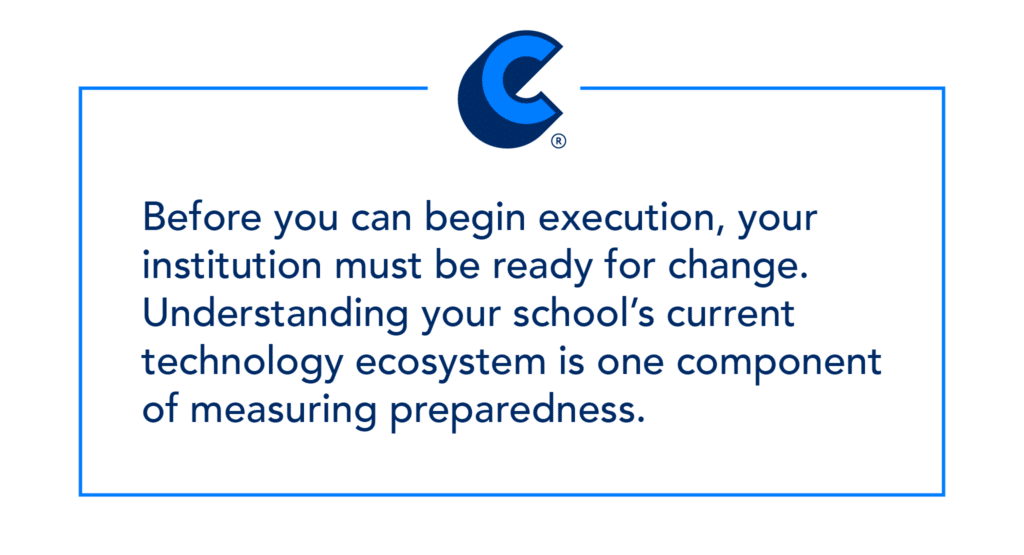Educational systems have seen significant modifications in recent years as a result of adopting technology in higher education. More individuals can now study that educational tools that automate feedback and grading are available online. This informs and guides schools. Because of technology developments, employees may rapidly access professional development opportunities and acquire and analyze student and program data.
Teachers that utilize these technologies in their classrooms and schools assist students in learning and achieving their objectives by personalizing and individualizing learning for all students, including those with special needs.
Test for usability: Before you can begin execution, your institution must be ready for change. Understanding your school’s current technology ecosystem is one component of measuring preparedness.

How are instructors currently utilizing the school’s technology resources? No one teaching style can meet the needs of all students, just as no single school-wide technological strategy can meet the needs of all students. Examining staff members’ expenditure on classroom technology and how it is used in the classroom can help you assess their views on the importance of technology in education.
You can then use this information to create a strategy for increasing technology deployment in the facility while incorporating technology into the classroom. Whatever your institution’s plan or objectives are, any new program or policy must have an implementation plan that defines your vision, establishes short- and long-term goals, and details the steps you’ll take to achieve those objectives.
Undoubtedly, the implementation process includes changes to the system, organization, program, and practice. It is a multi-year process guided by a shared vision that works best when the project’s leadership team establishes a professional learning infrastructure and develops a learning curriculum to improve the collective capacity of all parties involved. A solid foundation of support is essential for driving strong desire and commitment to employ technology to promote inclusive education.
The leadership team should also coordinate and begin outreach and marketing initiatives to mobilize people and resources by developing a communication plan that includes frequent updates to all stakeholders. Teams enthusiastic about and committed to achieving specific, short-term goals are more likely to maintain their passion for the project and achieve long-term success.
It’s a multiphase method that may seem strange if you’re used to doing things in a particular way in typical life. Developing a sense of accomplishment early in the process is critical for generating confidence and momentum. Other best practices for new technology implementation, include:
- Form a small pilot group.
- Ask relevant stakeholders to assess the technologies.
- Determine the direction and use.
- Experiment and collaborate in small groups to start.
- Offer ongoing training and motivation for staff to use these new technologies.
Remember, teachers will be dissatisfied if technology is unreliable or difficult to operate, and students will avoid it if it is difficult to grasp. On the other hand, when teachers, students, and parents are motivated to collaborate using your new platforms and applications, deployment outcomes are greatly improved.


